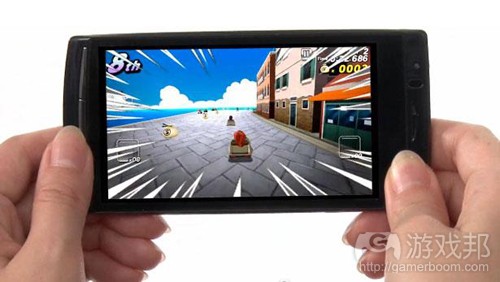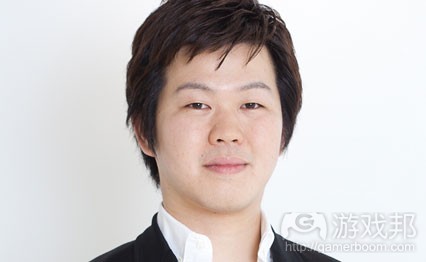Gree高管谈公司手机社交游戏开发理念
作者:Neil Long
电子游戏不再是开发者多年辛苦劳动后推出的被动型终端产品了。MMOG订阅量推动了“游戏即服务”这一理念的盛行,Zynga以及Gree等公司则进一步演绎了这一理念。数据就是王道,为了适应用户的行为习惯,游戏可以在其生命周期中根据需要而改变数据,从而适应玩家的游戏习惯。
这种相对较新的电子游戏设计科学可以完全绕开创意这一理念吗?虽然这不是Taisei Yoshida(Gree媒体业务高级副总裁)所关心的问题——但他的成功已足以说明答案。他的第一款热作《Tsuri-Suta》(游戏邦注:其英文名为《Fishing Star》),在发布五年后仍位居日本手机游戏营收榜单之首。
随着Gree继续积极开拓美国与欧洲市场,此方法将适用于更多面向西方的游戏题材。Gree最近在Gamescom向大众展示了《Wacky Motors》、《Metal Slug F2P》、《Astro Pizza》以及《Moshi Monsters 》这些游戏,Taisei Yoshida在最近采访中谈到了他的游戏开发理念、背景,以及对掌机与手机相结合的看法。
你从小到大玩过哪种类型的游戏?它们又是如何影响你对Gree的前景定位?
我从小就开始玩游戏了,是的,它们确实影响了我现在所做的事,但过去我常常是和朋友们一块玩游戏,而不是自己在那玩。游戏更像是一款社交产物,这也是我发现它的乐趣所在。目前游戏领域上的单机游戏数量逐渐增加,特别是针对个人电脑的单机游戏,但是我最感兴趣的是将社交网络、服务及游戏三者融合在一起。正是这一兴趣推动着我去制造和开发这种类型的游戏。
你认为收集哪部分数据最有用?
我们主要关注三大话题。第一是用户注册量,也就是我们可以得到多少用户注册量。第二是留存率,也就是用户会使用我们的游戏多久。第三是我们细心观察的每日活跃用户数量,以及我们的收益如何。以上三点为我们最重要的切入点。
游戏发行后,你多长时间会更新一次游戏?更新的幅度有多大?
我们有一款卡牌战斗游戏叫做《Cerberus Age》。发行初这款游戏的留存率不是很高,所以我们调查了原因,我们发现游戏用户添加的朋友越多,他们的留存率也就越高。如果我们在这款游戏中增添一些玩家可以和朋友一起玩的活动,那么游戏就能自动提升留存率。这也意味着DAU会相应上升。
比如《Fishing Star》已经更新了十次。技术方面的改变是一大不同之处,但另一重大领域就是我们开发了玩家可以同朋友一起玩的内容。
这种开发风格如何影响你们开发者的创意自由呢?
实际上,开发者想要制作的游戏与能够吸引用户的游戏是一样的。它们之间没有什么不同。所以我们观察了大量的用户后发现吸引他们的游戏,实际上就是和我们想要开发的游戏。
在Gree,基于玩家数据制作游戏与基于开发者理念制作游戏的“老套路”,这两者之间的平衡点是什么?
其中的重要之处就是我们有两个维度。第一个就是按照旧方式发行游戏并且希望用户会喜欢。第二个就是我们实际上正在使用的方法,即发行游戏时根据玩家的喜好做些适当调整。智能手机的功能越来越多,因此开发者可以根据自己的想法来创造游戏,并观察玩家在游戏中的行为。这很关键。智能手机应用的优势在于我们可以根据玩家的喜好不断地更新游戏。这样才能保留这些用户。
是否有许多开发者从主机游戏平台转向了你们公司?
从主机游戏转向手机游戏显然是一种趋势。但是未来我们还会开发出平板电脑游戏和智能电视游戏。不过,未来趋势在于主机与手机的整合。
你是否同主机游戏制造商就如何将手机和主机平台整合问题进行沟通?
如果有可能和主机游戏产商一起工作的话,我想那会很有趣的,但是现在我们还没有实现这一想法。同Namco Bandai,Sega,Capcom或Konami这类公司一起工作会很有趣,因为它们自己也有社交游戏。如果可能的话,我会尝试着和它们合作,将来创造出更多有趣的游戏。
微软透露会在E3上展示SmartGlass,对此你作何感想?
这确实很吸引我们。微软和任天堂尝试做的也就是整合手机社交功能。我们和硬核游戏开发者在未来都会向这一领域发展,我觉得这一领域非常有趣。(本文为游戏邦/gamerboom.com编译,拒绝任何不保留版权的转载,如需转载请联系:游戏邦)
Gree’s gaming lead on the new era of data-led development
By Neil Long
Videogames are no longer the passive end product of several years’ toil. MMOG subscriptions popularised the idea of games as services, and more recently companies like Zynga and Gree have taken that idea one step further. Data is king, and games can be tinkered with throughout their lifespan to suit player behaviour.
Does this relatively new science of videogame design bypass creativity altogether, though? It’s not a question that concerns Taisei Yoshida, senior vice president of Gree’s media business – his success speaks for itself. His breakout first title, Tsuri-Suta (Fishing Star), remains among the top grossing titles in Japan five years after release, a feat made all the more remarkable once you consider how rapidly the mobile space has evolved in that time. Yoshida-san makes no apology for giving players exactly what they want.
As Gree continues its aggressive pursuit of US and European markets, this approach will be applied to more and more western-focused genres. In the week it showcased Wacky Motors, Metal Slug F2P, Astro Pizza and Moshi Monsters to the masses at Gamescom, we spoke to Yoshida-san about his approach to game development, background and linking mobiles to consoles.
What kind of games did you grow up playing, and how have the influenced your outlook at Gree?
I have been playing games ever since I was young and yes they have influenced what I am doing right now, but instead of playing games on my own I used to play with my friends. It was more of a social thing and that’s what I find interesting. Right now the games that you can play by yourself has been increased, especially on the PC, but the integration between social networks and services and games is what I’m most interested in. That interest was like a trigger for me to create and develop more games like this.
Which parts of the data you collect are the most useful?
So we have three main topics that we are concentrating the most on. The first is user registration, and how much registration are we going to get. The second is retention and how long they can play the game with us. And the third is that we watch the daily active users very carefully, and the profit that we make. Those three are the most important points.
How often, and how significantly, do you change games after their release?
One example that we have is a game called Cerberus Age, a card battle game. When we released it the retention rate wasn’t so high, so we investigated why and found out that as you increase the number of friends in the game you would increase the retention rate. If we increase and develop more events where you can play with your friends, that would automatically retain the gamers playing the game itself. That would mean a rise in DAU as well.
Fishing Star, for example, has been updated ten times. Technical changes are one of the major differences but the events we have developed where you can play with your friends is another important area.
How does this style of development affect your developers’ creative freedom?
The games that developers want to create and the games that users we are trying to appeal to play actually match quite well. There is no difference between the developers who are creating games and the users who want to play. So we do watch the numbers to see which games attract more users, but that actually matches what we want to make as developers.
What is the balance at Gree between making games based on player data and the ‘old ‘way’ of making games based on your developers’ ideas?
The important thing is that we have both dimensions. The first one is the old way of releasing games and hope that the users like it. And then the second one is that we are actually using is that we release the game and we make some changes that users would like. Smartphone functions are increasing so much that developers can create games as we go, and see how users behave. That’s also important. The advantage for smartphone applications is that we can update each time if the users like it or don’t like it. By doing this we can retain users playing our games.
Are you seeing a lot of developers move to your company from the console business?
Yes, that’s definitely a trend, moving from console games to mobile games. But having said that we have tablet games and smart TV games that will to come in the future. However, the trend will be integration between console and mobile.
Have you had conversations with console manufacturers on how to link up mobile to consoles?
Yes, it will be interesting if it is possible to work with a console game manufacturer, but at the moment we aren’t. Having said that, it would be interesting to work with companies like Namco Bandai, Sega, Capcom or Konami where they have social games as well. If it’s possible we are trying to work with them to create more interesting games for the future.
What was your reaction when Microsoft revealed SmartGlass at E3?
Yes, that definitely appealed to us. What Microsoft and Nintendo are trying to do is to have mobile social functions too. Hardcore game makers and us are going toward the same field in the future – that’s what I find interesting.(source:edge-online)









































 闽公网安备35020302001549号
闽公网安备35020302001549号